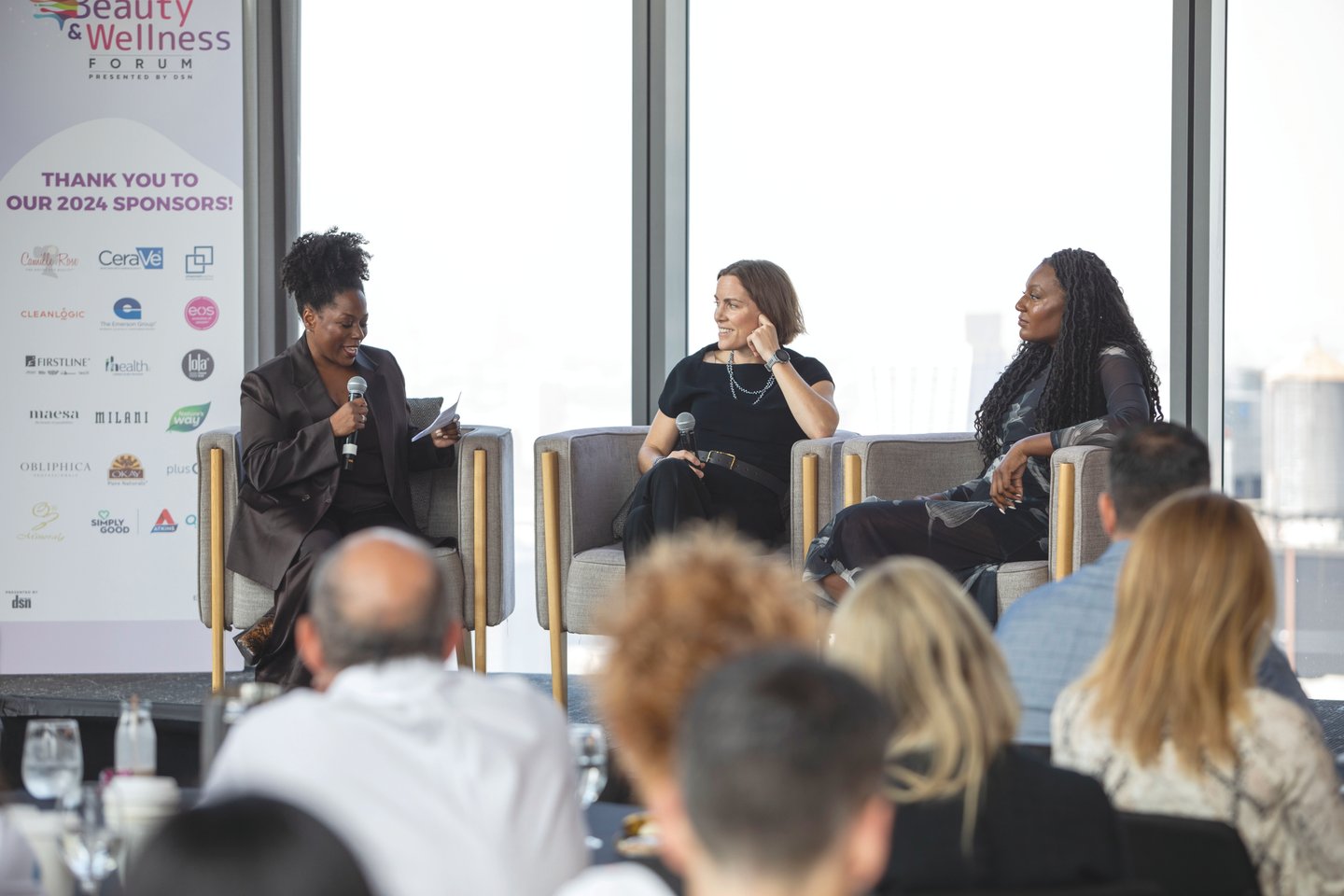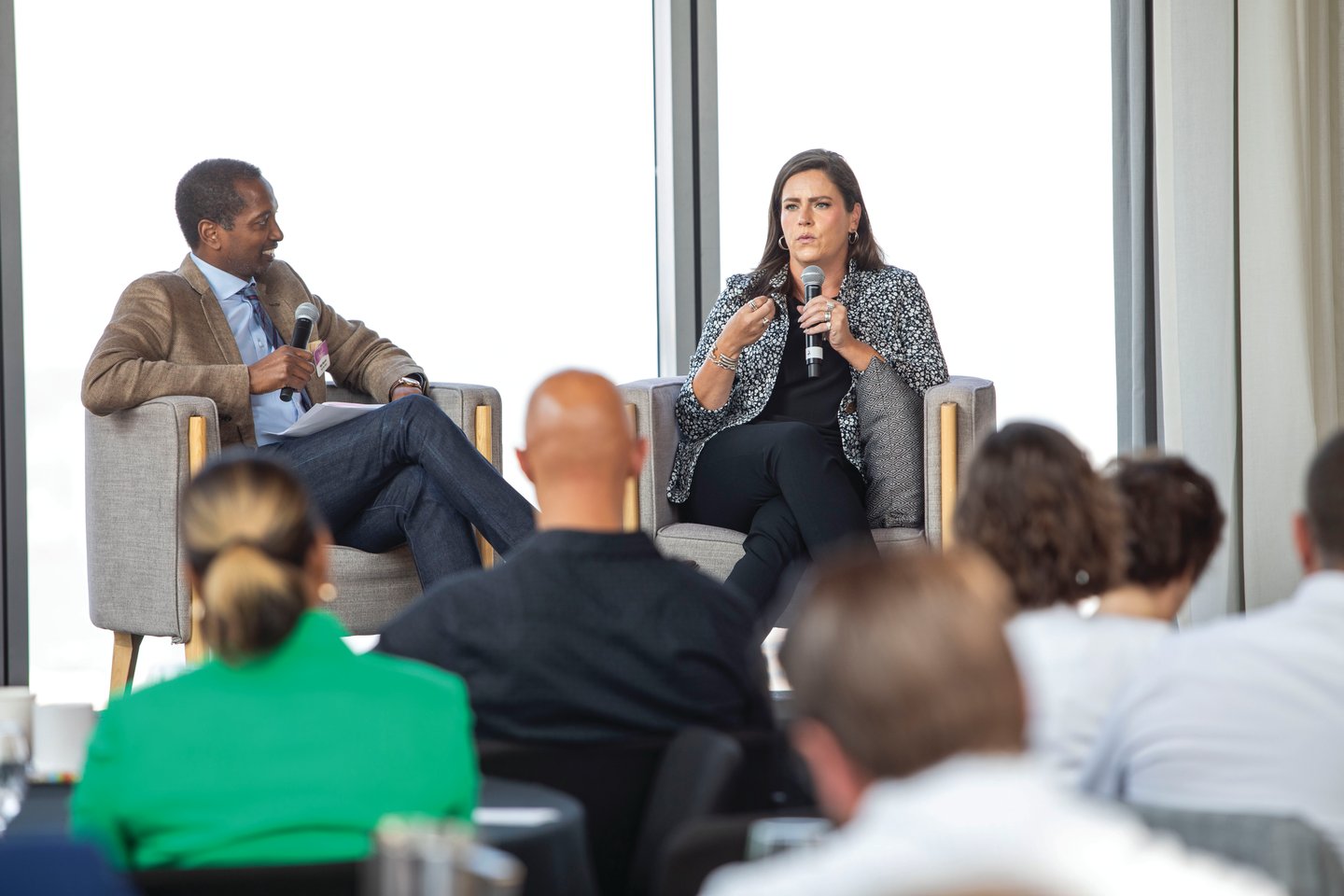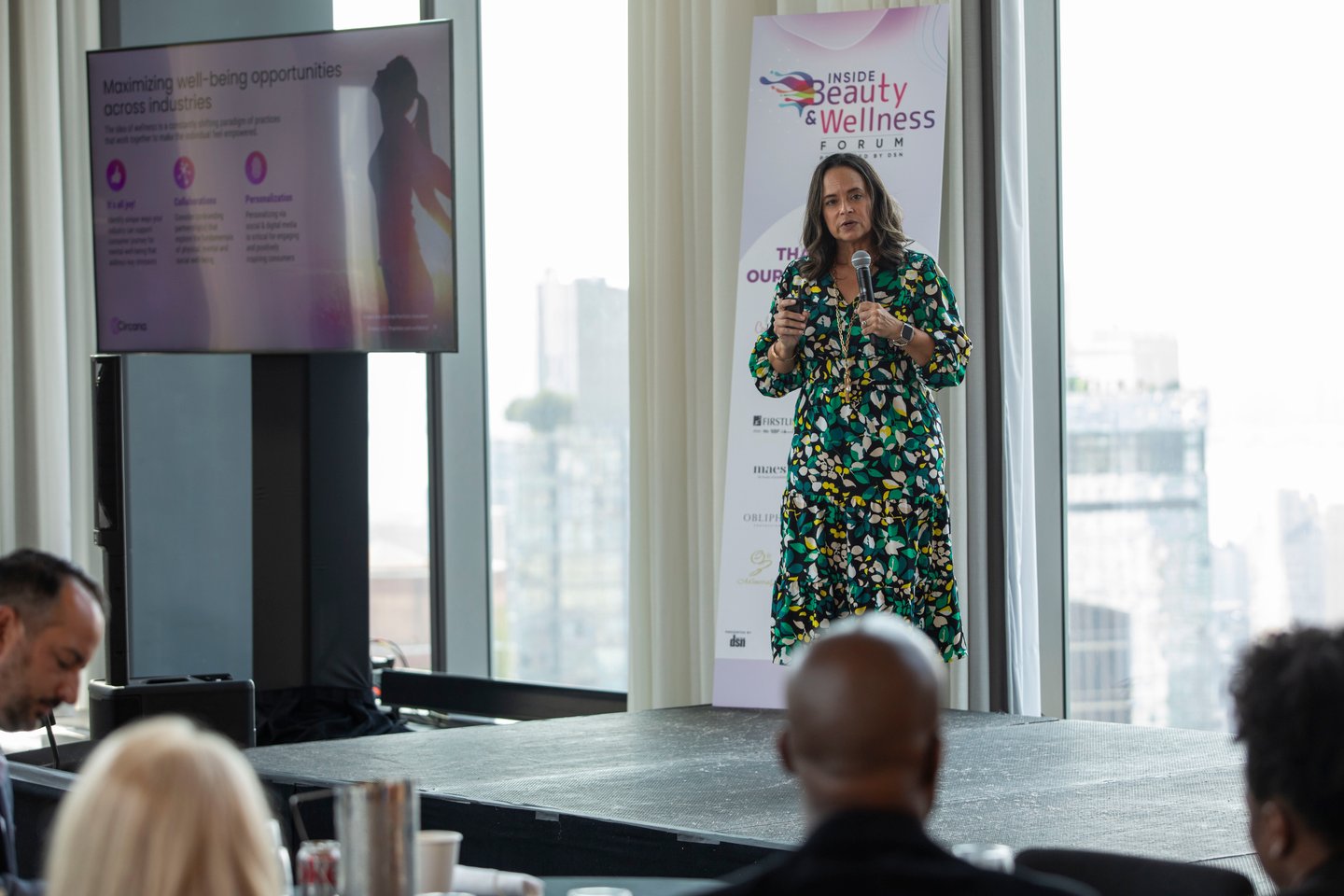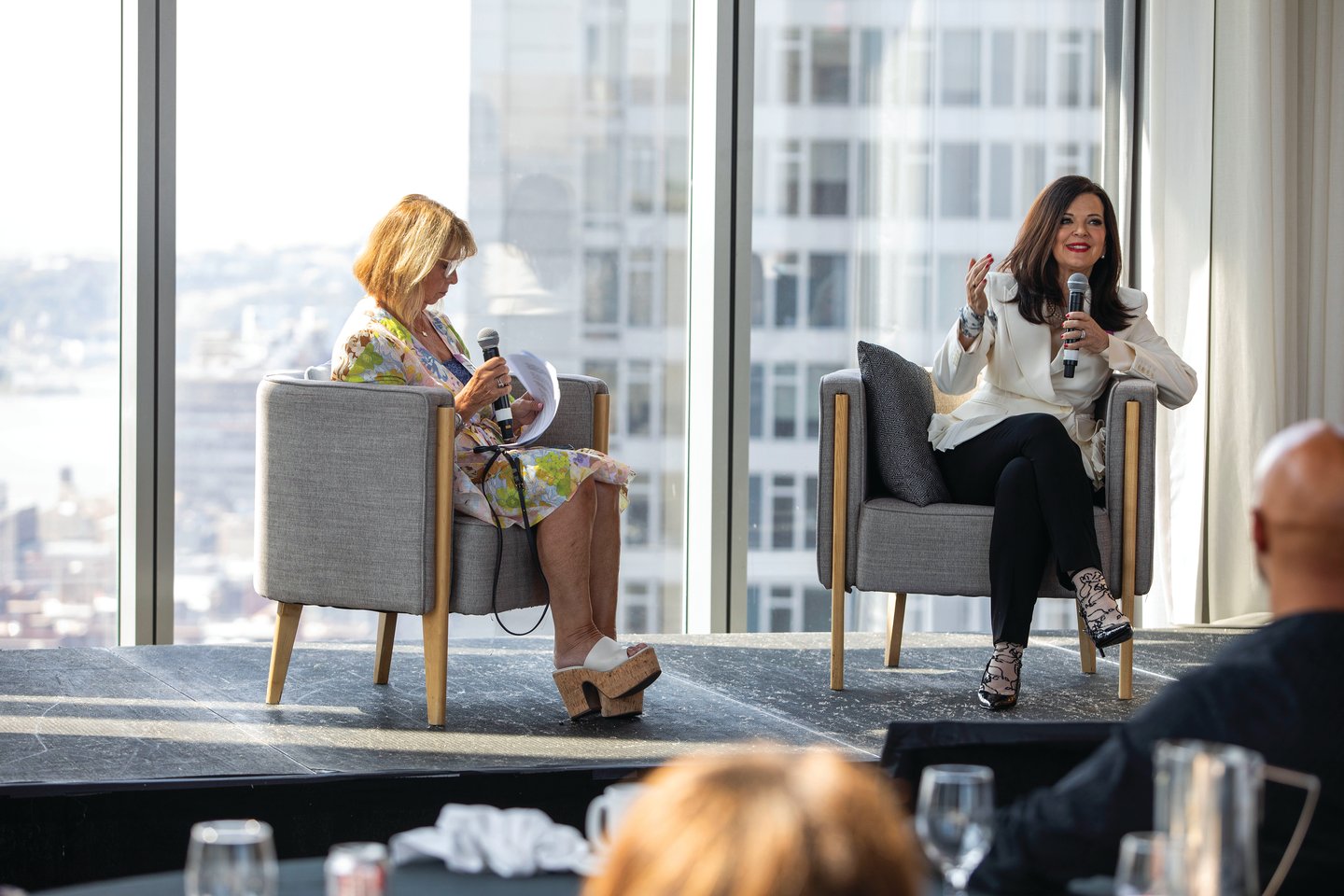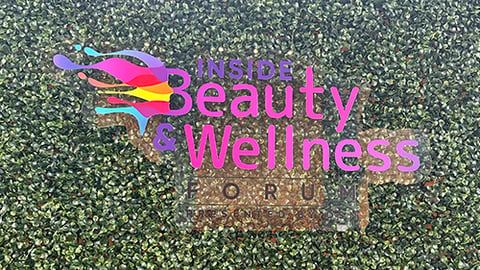Hot takes from DSN’s Inside Beauty Forum
Community, caring, AI, women’s health and misinformation. Those were among the buzziest topics at DSN’s 2nd annual Inside Beauty & Wellness Forum, which focused on the intersection of wellness and beauty.
Held at Virgin Hotels in New York City on September 12, this year’s edition saw double the attendance from 2023, with top industry leaders all ears to hear from such retailers as Walmart, CVS, Walgreens and Ulta Beauty as well as from brands like The Honey Pot, Sundial Group of Companies, Camille Rose, Julie and Milani and many others.
Attendees also heard from outside voices such as Reddit, TikTok, Uber Advertising, Circana, Pinterest, ParentData and TIMEmagazine. Emerson Group, eos, Camille Rose, CeraVe, Cleanlogic, Precious Mineralz, Firstline Brands, iHealth, Maesa, lola from Rio, Obliphica, Okay Pure Naturals, Simply Good/ Quest Nutrition, Nature’s Way, Plus One and Milani Cosmetics sponsored the event and were in attendance. Milani ensured everyone looked their best with an on-site touch-up station.
Here’s a recap of the action-packed event.
Community Builders: Connecting Culture, Commerce and Entertainment
Richelieu Dennis, Sundial Group of Companies Sophia Dennis, Beautycon; Megan Decker, moderator and editor/reporter, Refinery 29.
Community is the foundation of Sundial Group, a game-changer in personal care with its Shea Moisture brand. Shea Moisture was a trailblazer in the concept of not only building brands but also supporting the communities that supply the ingredients. The company takes 10% of its top line and reinvests in communities.
“The business has to pay for itself—the revolution must be financed,” said CEO Rich Dennis. “You take the capital you are making and reinvest in the communities. This is the idea of community building and engagement—it’s not just charity. The business has to work.”
[Related: Latest Inside Beauty News]
Serving products to meet the community is another aspect. “Everybody can make a good product today. But does that product actually mean something more than function?” asked Dennis. “We live in this influencer-driven world and the thought that is the gateway to brand success. But I don’t care about that. An influencer is going to lead you today and then go onto the next trend. What I care about is if a brand cares about the people it serves.”
With authentic reviews bubbling to the top, there is a shift with consumers seeking content creators who understand their specific needs, Sophia Dennis said. At Beautycon, she’s working with creators so they can make sure they are educating their audiences. “They can work with brands, but still hold integrity,” she said. “Too often you are being marketed products that ‘don’t look like you.’”
Bridge to Well-being: Where Beauty and Health Meet at Walmart
Ralph Clare, Jerrit Davis, Vinima Shekhar from Walmart; Sadè Muhammad, TIME
Walmart may be the world’s largest retailer, but a trio of Walmart executives proved it’s a nimble, innovative and “people-led, tech-powered retailer.”
With 16 years of experience at Walmart, Ralph Clare has seen the evolution. “The biggest change over the last several years is our ability to take an idea and bring it to fruition or to take a new concept and put it into our stores with speed,” said Clare, the senior vice president for merchandising, consumables, health and wellness.
Walmart harnesses technology to strike efficiencies without abandoning the merchant’s touch. “We leverage qualitative and quantitative data and make decisions and there is still going to be a merchant that looks at all the data. That makes all the difference,” Clare said. That merchant expertise comes into play, especially when launching start-ups and smaller supplier partners. “It’s all about balance.”
Vinima Shekhar, the new vice president of merchandising, beauty, said her move into the role from wellness was easy because of the synergy between the two categories. “You have to listen to the consumer whether it’s wellness, health or beauty, and that’s the most important and consistent thing,” Shekhar. “You must cater to what they are telling you.” Making sure the right items are on the shelf or online is critical in beauty. “One hundred percent of zero is zero. If we don’t have it on the shelf or in fulfillment centers, we are going to disappoint the customer, so operational efficiency is absolutely critical.”
Shekhar nodded to Walmart’s agility, which is critical to beauty. “We are trying things and failing fast and iterating again. Just because we have 4,500 stores does not mean we aren’t innovating. We can learn a lot from 200 stores and figure out if the customer likes it and then scale.”
Boots on the ground is part of Shekhar’s game plan. “It is always important to talk to the customer,”she said. Recently, she encountered a customer in the store gazing at the shelves. After chatting with her, Shekhar was able to help solve a problem she was experiencing. “Don’t underestimate the power of one.”
Shekhar spotlighted a recent move at Walmart to make shopping easier for textured hair products by merchandising by hair needs. “We listened to the customer who said they don’t want to walk to a different aisle to find products for textured, curly or straight hair.”
Striking the balance between new and legacy brands is a mission of Jerrit Davis, Walmart’s vice president merchandising, personal care. He noted Walmart’s launch of newcomers like Lume and W while also supporting venerable franchises like Old Spice. “Old Spice is an example of a brand that keeps reinventing itself,” he said. “So, if you are a new brand or any existing legacy brand, it is important to ask, are you solving relevant customer needs?”
[Related: October Issue Stories]
One example of how Walmart connects to its community centers on America’s dental crisis linked to “dental deserts.” The retailer partnered with a supplier to bring 52-foot trailers into underserved areas for education, cleanings, extractions and other dental care. “Seeing how we gave back to the community was a highlight of my career,” Davis said.
Women’s Health: Unconventional Wisdom
Leigha Dunbar, Walgreens; Emily Oster, ParentData; Sadè Muhammad, TIME
Women may live longer than men, but they spend much of that time in poor health. Walgreens’ Leigha Dunbar led an inspiring chat with Emily Oster of ParentData and TIME’s Sadè Muhammad about how better education can change the dynamics. A few examples include the high rate of maternal mortality in the United States and the fact Black women are three times more likely to die during childbirth.
Dunbar also delved into what Walgreens is doing to curtail the proliferation of misinformation. “Education and accessibility are the first steps to women understanding where they need to go [for information] and how they can solve the issues they’re dealing with everyday,” Dunbar said.
TIME magazine’s research health was one of the hot buttons for its readers, and it embarked on a mission to deal with issues such as mental health, stress, women’s life cycles and basically what’s normal, said Muhammad. “When we think about educating women, there is a lot of basic information. There still is a missing opportunity.”
Emily Oster founded ParentData to empower parents by providing data and tools to make confident decisions. She addressed the question of what women should be asking doctors.
“People should ask about the issues they’re worried about,” Oster said. “The biggest problem is that we’re not prepared enough and sometimes don’t remember the questions. Doctor visits can be rushed and anxiety- provoking,” she said.
One of the topics women want to hear about the most is menopause, but no one ever wants to talk about it, the panelist said. At least 40% of women in the United States are going through some part of menopause— either perimenopause, menopause and post-menopause. “No one’s journey is the same,” noted Dunbar.
Walgreens works to put it all together. “Part of the story is engaging [shoppers]—bringing her in to look at products, picking them up and making sure there are great claims and making sure the information is digestible for her,” Dunbar said. Walgreens pharmacists provide an essential resource, she added.
Bridge to Well-being: Where Beauty and Health Meet at CVS
Michelle LeBlanc, CVS Health
In her 20 years at CVS Health, Michelle LeBlanc has held various roles that have prepared her to take on the position of vice president of merchandising for beauty and personal Care and Hispanic Center of Excellence.
“I grew up in healthcare and have a deep understanding of what health means to consumers... but beauty is so fun and there is so much creativity,” LeBlanc said. “I’m excited to intertwine my knowledge of health with beauty.”
Continuing with the theme of misinformation in the market, LeBlanc pinpointed efforts CVS Pharmacy has in place to educate shoppers.
“We have a long history of putting the consumer at the center of everything we do all the way back to exiting the sale of tobacco,” she said. CVS Pharmacy was also a trailblazer in efforts to remove retouching in beauty imagery and pledged to sell only sun protection with an SPF15 or higher. “What these bold moves have done is built a foundation of trust and transparency,” she explained.
The retailer also is on a quest to simplify shoppers’ journeys. “We take a lot of pride in our assortment with what we are saying and what we choose to carry,” she said. “I like the word balance—we have a mix of iconic and emerging brands.”
Over the past few years, CVS Pharmacy has focused on curation to simplify shopping. The right balance of breadth of assortment and curation is possible, as exemplified by the retailer’s Skin Care Centers. The assortment stocks everything from acne to items for mature skin in a way that eliminates confusion and with experts on hand for education. “You have to be able to simplify the selection in a thoughtful and deliberate way so shoppers can make the right choice in a sea of products.”
[Related: Trending Skincare Stories]
The human connection is crucial in stores, she added. “Shoppers have the ability to come into our stores and ask questions to get the right product for their need states,” she said. “Our Beauty Consultants are our superpowers and have deep relationships with their customers.”
While social media has promulgated falsehoods, there is an upside in beauty. “Social media has added a third dimension—another channel for consumers to engage. Social media is about finding your community and following a person because they are really behind the product. Products can go viral in a way I’ve never seen before. I love beauty, and I love my job.”
Leveraging Real-Time Trends in an Asynchronous Supply Chain
Rachel Hardy, Pinterest; Megan Petrie Ramm, Uber Advertising; Allison Tepley, Reddit; and Rema Vasan, TikTok
Representatives of the buzziest social media platforms assembled for a deep dive into how they shape and address consumer beauty needs and how brands can benefit.
Allison Tepley, head of global audience marketing for Reddit, said her platform is where advanced trends get started because it is where influencers talk to each other. “Brands can use this for insights and trendspotting but also the idea of the folks who come in from search come in for answers from the people who are experts in the space.”
Brands can tap into Reddit’s data with a tool called Reddit Pro, which has a trendspotting resource segmented by category and brand. For example, there are almost four million people logging in to go “skin care addiction.”
Megan Petrie Ramm, head of Americas for Uber Advertising, discussed Uber’s vast reach. “If you have five apps on your phone, Uber is going to be one of them. It is a utility in everyone’s life. All of that scale amounts to a ton of data we can bring back to our consumers.”
TikTok was discussed virtually during every presentation at the forum. Rema Vasan, head of North American Marketing and Global Gaming Marketing, said people spend an average of eight hours a day online. That has upped the expectations from social sites.
What’s unique about TikTok, Vasan said, is that content is based on interest so each page is customized to the user’s interests. “Fifty percent of people are exclusively focused on the platform. We have earned our place in the hearts and minds of more than 170 million consumers across America. Beauty is among top interests.”
TikTok has impacted how consumers search, discover and shop for beauty. The hashtag TikTokMadeMeBuyIt has 9.5 million posts as of September 2024. “That’s fueling the shopping behavior, and the brands that do best are those who are always on and showing up in authentic and relevant ways.”
Pinterest is the home for innovation, according to Rachel Hardy, head of consumer product marketing. “People come to dream and manifest—and try new trends and looks,” she said of the site, which has more than half a billion monthly users. Gen Z is the fastest growing segment.
Pinterest launched a suite of tools that allow people, no matter skin or hair color, to see themselves. “When people feel they are more represented, they can feel more engaged and confident in their purchase.”
The Intersection of Beauty & Wellness
Larissa Jensen, Circana
Larissa Jensen, the senior vice president of global beauty at Circana, put some data to the concept of the intersection of beauty and wellness. Jensen explained that Circana’s Wellbeing Insights capture products or services that empower self-care by enhancing consumers’ physical, mental and emotional well-being.
Self-care remains important to consumers, with 78% of them actively practicing rituals and 65% calling it a priority. They do so for physical and mental health, including combating stress. “The top four physical self-care goals in the United States are to improve physical health, weight management, disease and illness prevention and increased energy.
“You will see there is a lot of conversation about GLP-1 medications, and from our research, we believe that is something that is going to increase with the expectations that within the next 10 to 15 years, up to 7% or more of Americans will be on some type of GLP-1 medication. It is going to affect everything in terms of vitamins and supplements that consumers take in order to offset some of the side effects,” Jensen said.
With the realization that “you are what you put inside you,” there is growth in different ingredients in supplements, with magnesium showing the biggest growth. “As a beauty expert I love that collagen is number two.
It obviously is an ingredient in topical skin care, but when you ingest it, it also helps with bone and joint health among other things,” she said. Digging into beauty and how well-being is played out in the category, Jensen said prestige and mass beauty are among the fastest growing in all the businesses Circana tracks. “It’s a huge industry, close to $110 billion and up 8% in the past 12 months ending in March. Many talk about the lipstick index, but we believe it’s actually bigger than just the lipstick index.
[Related: New Product Launches]
We’ve been calling it the beauty index.” Despite pressure on rising prices, shoppers are clinging to prestige beauty over mass. “Prestige is more of a treat, a little luxury that is an indulgence,” she said. “When you compare prestige to mass, prestige is outpacing mass in most categories and has for the last several years.”
Breaking Barriers and Normalizing Conversations Around Women’s Health
Monique Benoit, Ulta Beauty; Bea Dixon, The Honey Pot; and Amanda E/J Morrison, Julie Products Inc.
In one of the liveliest chats of the day, trailblazers in the women’s health industry spoke about their founder stories, the barriers they face and the headway they’ve made.
Beatrice Dixon founded The Honey Pot after suffering from bacterial vaginosis for an extended period. Nothing would help, and then, in a dream, her grandmother gave her a list of ingredients. “When I woke up, I wrote them down and made myself a formula; the crazy thing is, it worked,” Dixon said. “It turned out millions and millions needed these products and I’m grateful.”
Dixon gave a shoutout to Monique Benoit, senior merchant at Ulta Beauty, who was a buyer at Target at the time and recognized the potential of The Honey Pot. Today, the brand has extended into body washes. “We wouldn’t be here without Monique and Target.”
Julie Products is the second innovation from Amanda E/J Morrison, who was a co-founder of Mented Cosmetics, a brand for women of color. Julie is a progestin-only emergency contraception product that helps prevent pregnancy when taken within 72 hours after unprotected sex.
“We are in the pharmaceutical space and focus on the women’s reproductive OTC—the bottom drawer products we are trying to bring up to the top. We lead with education and access to reduce the shame and stigma around reproductive OTC products like emergency contraception and birth control.”
Stories like theirs are important in women’s healthcare, said Benoit. “As a merchant at heart, I know how important storytelling is in building your brand and securing investments.” The latter is made hard not only for women but especially women of color. “Everybody in this room might not be using these products, so when we talk to investors, we have to get them to buy in and understand there is an opportunity.”
Dixon agreed that getting The Honey Pot off the ground was an uphill battle. “We did a family and friends round, which was literally raising money to pay the bills,” she said. The next round came from the New Voices Fund, which was the outgrowth of the sale of Sundial to Unilever. “Rich Dennis and New Voices understand what it was to be a human of color out in the world trying to raise capital. If we did not get the capital, we might not be here today.”
What’s important to note is that The Honey Pot has cracked into the top five-selling brands in feminine hygiene, with sales in drug stores soaring 31% through April 2024. That’s against legacy brands such as Vagisil and Summers Eve.
The New Voices Fund also invested in Morrison’s first business, Mented. “Investment in Julie was different from my first company because it is easier to say I’m a second-time founder, and I’ve learned all these lessons,” she said. However, raising money for reproductive OTC is “noisy, controversial and not easy.”
For a variety of reasons, Gen Z is especially lost regarding women’s health, according to Morrison. “My pitch to investors is what if 51% of the world’s women could decide and make a different choice?”
Fireside Chat with Mary van Praag, Milani
Mary van Praag
Mary van Praag is a seasoned beauty executive with positions at beauty brands like Revlon, Coty, Inc. and Perricone MD. She’s able to harness her experience to spark sales of Milani Cosmetics, a mature brand that is acting more like a disruptor.
“I was attracted to its core DNA and its competitive, compelling advantages,” said van Praag of the brand she now runs. “It is prestige quality at accessible price points. Our products are made at the same prestige suppliers in Italy and South Korea as prestige brands.”
Long before Fenty, Milani offered shade ranges for all complexions. “That’s not an afterthought, it is part of every product we develop,” she said. “People have said this was the first drugstore blush they used because They couldn’t find anything that worked on their skin.”
So, what’s van Praag’s secret for transforming a brand founded in 2001? The formula is the right team, a reboot of core items and bold launches. “We’ve hit the flywheel right, with the right amount of innovation but reanimating our core.”
The numbers bear that out. Milani just achieved 12 straight quarters of consecutive growth in dollars and units. “We hit a major milestone of about $200 million in sales and we are the fastest growing of the top 10 in lip, eye and face brands.”
Under her direction, Milani leaned into core franchises, such as its Make It Last Setting spray, which is the number one item in the subcategory. The product received an additional boost recently with Milani’s first collaboration with female athletes. The Face Set. Mind Set campaign features Jordan Chiles, a member of the gold-winning USA gymnastics team; Sabrina Ionescu, also a gold-medal winner with the USA Olympic women’s basketball team; Chiaka Ogbogu, a member of the USA silver-medal volleyball team; and weightlifting champion Mattie Rogers.
Best Practices for Mission Driven Strategies
Pat Mooney, Wakefern Food Corp.; Anastasia Pagonis, American Paralympic Swimmer; and Isaac Shapiro, Cleanlogic
Anastasia Pagonis, just back from the Paralympics in Paris, lost her sight to an autoimmune disease but not her passion for beauty.
“I always had a passion for makeup and losing my vision was not going to take that away,” she told the audience. Pagonis is thoughtful about what brands she teams up with. “It is important to me that every brand I work with truly wants to help me as someone with a disability and make a difference.” E.l.f. created a beauty bundle with a scannable QR code that links to Pagonis giving application tips for the blind and low-vision community. It was inspired by techniques her mom used to help her apply makeup.
Pagonis says about 70% of people have some vision impairment, and many like her don’t read Braille, so the audio cues are a solution. She also worked with CVS to create QR codes to help “read” medications.
Isaac Cohen’s mom lost her sight at age seven, and her story helped inspire him to create his brand, Cleanlogic, to go beyond skin care. Individuals with disabilities assemble the products. The company established a nonprofit fund, the Inspiration Foundation. Through its research, Cleanlogic discovered the unemployment rate for blind and visually impaired was 70%. To lower that rate, the brand teamed up with Walmart to help build jobs for people with disabilities, giving them roles packaging the brand’s products. Cohen hopes other employers will follow his lead with the goal of increasing the roles for people with disabilities by 10%.
Cohen said people with disabilities are accurate and loyal employees with high safety records and high productivity. Moreover, studies found that the hiring practice improves work culture, lower recruitment costs and reduces turnover.
[Related: Trending Haircare Stories]
Pat Mooney said Wakefern maintains an inclusive workforce, and employees are always ready to do the right thing. Those attributes were visible when its trade area was hit by Hurricane Sandy; it also was on display during the COVID pandemic.
“We became community centers [during Hurricane Sandy],” Mooney said. “We became community centers to warm up, charge your phone or grab a cup of coffee. That’s not about money and profit; that’s about doing the right thing.”
Redefining Luxury: The Intersection of Mass and Prestige Beauty
Ali Kole, Meridien Partners; Janell Stephens, Camille Rose; and Larissa Jensen, Circana
Like Taylor Swift, the beauty industry has gone through many eras, as pointed out by Ali Kole, a seasoned beauty executive. There was dominance when department stores ruled, followed by the democracy era with the emergence of Sephora and Ulta Beauty. That segued into the digital time frame. “Now we are in the diversity era—there are so many ways customers learn about products and brands. It is no longer a linear path, and people are purchasing in many ways,” she said. That includes stores but also marketplaces, such as Amazon, where Kole helped build the beauty business and the rise now of TikTok Shop.
“The brands and retailers who are successful going forward in this era are going to be those who recognize that diversity and are able to adapt to serve it well,” she predicted. Acknowledging some premium brands are hesitant to sell on Amazon, Kole noted it is a force to consider but do it thoughtfully and decide if any partnerships are at risk. Under her watch, Amazon launched a Premium Beauty program offering brand protection and opening the gates. It gives brands control over their products against unauthorized sellers.
Janell Stephens discussed her journey building Camille Rose from her kitchen to the major mass market shelves. “Luxe is moving away from the price of a product,” she said. “People used to think the more expensive the product, the better it is. But to me, it is the look, the feel of the product and the experience. People are prioritizing how you feel when you buy a product.”




